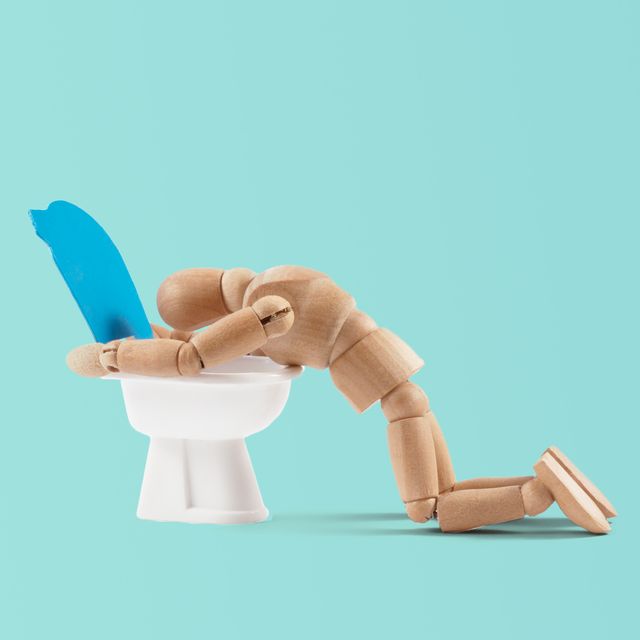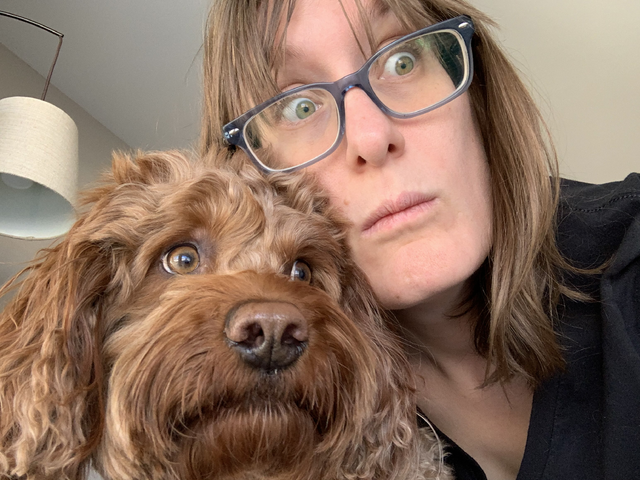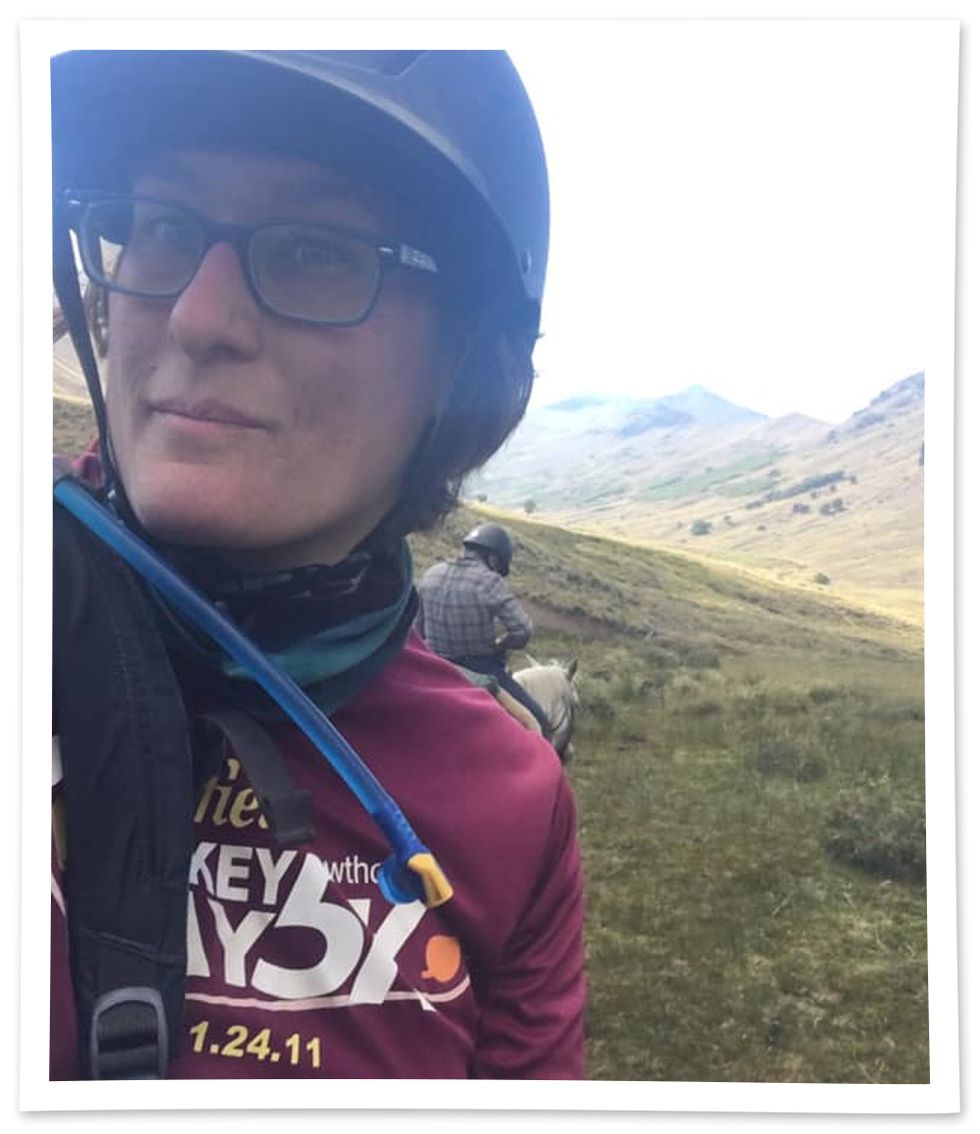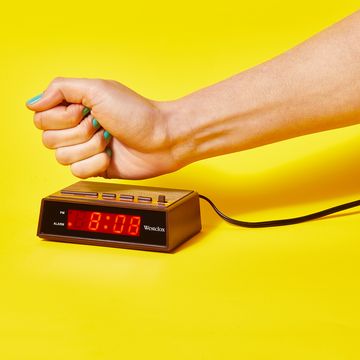Earlier today, I wrote in my journal: “I have to write an essay about the fear of vomiting, but I’m scared to write it because I’m worried it’ll make me afraid I might vomit.” It’s a lot to unpack, I know. But it’s my phobia in a nutshell.
I am living with emetophobia, and have since childhood, for more than 20 years now as I'm just about to turn 37. It's an intense fear of vomiting, including seeing vomit or hearing someone else throw up. The most intense form affects 0.1% of people, and a lesser version affects about 8%, with women being four times more likely to have this often-unheard-of phobia. Just like it impacts my own life, others afflicted with the condition often spiral into panic attacks that can last for days, amid a near constant base-level anxiety that you might throw up. It's been a force for (mostly negative) change in my life, pushing me to comb over every single item that I eat, drink very little alcohol, and monitor all activities for potential nausea.
How does this impact me on a daily basis, you might wonder? I remember being quite young, around 10 years old, and carting my pillow and blanket into the bathroom to sleep on the floor next to the toilet... just in case I threw up. And in high school, feeling sick before school (likely due to a then-unknown allergy to oats that makes me very ill) would send me into a teary-eyed frenzy. I couldn’t go to school in case I threw up in class, so I would instead call my mom at work and tell her I’d already thrown up, and to call me in sick. Those days, I never actually vomited.
In college, however, it escalated: I lost a job because I called in sick every time I felt nauseous. I was paranoid about not just vomiting, but doing so in a public bathroom while I was at work. To their credit, my employer actually did try to troubleshoot. Before firing me, they asked, “Do you have a condition?” I didn’t know enough at the time to say yes, I did — in fact, I was annoyed they'd even asked. Looking back, I thought I was just overtired from class and staying out late, and that’s why I felt sick.
In fact, I never even vomited while on the job, or at home beforehand — and in reality, I hardly ever vomit at all. This condition isn't me fighting back urges to vomit everyday, but the complete opposite. The hallmark of emetophobia is that we spend so much time and effort trying to avoid vomiting, that emetophobics actually opt out of most opportunities simply because of fear.
Being self-aware and knowing the logical explanation for my nausea doesn't help. I know that an egg salad sandwich doesn't pair well with lemonade at lunch, and that my resulting nausea will eventually pass. It doesn't stop me from running to the bathroom every 20 minutes to take my temperature with a shaky hand because the idea of throwing up gave me uncontrollable shivers. I know that the last time I had food poisoning was because of an expired tomato in a grab-and-go salad; it doesn’t stop me from meticulously checking every cherry tomato now for those 'weird' spots, nor did it stop me from following up with every person I shared that meal with to see if they were nauseous, too. A non-phobic person would acknowledge these things and move on; instead, I crawl back to the bathroom floor with my pillow and spend the night waiting for the inevitable vomit that never actually comes.
Emetophobia can be a tricky thing to treat. Una McCann, M.D., a professor of psychiatry and behavioral sciences at Johns Hopkins Medicine, says those living with emetophobia need to “learn how to recognize automatic irrational thoughts and engage in behaviors that are soothing.” Sounds easy, right? Anyone with anxiety (and even Dr. McCann) can tell you it’s often not possible to stop a destructive mindset. Typically, doctors employ cognitive-behavioral therapy (CBT), a process that slowly exposes the person to their particular fear or trigger in progressively more anxiety-inducing ways. The idea is that the more you’re exposed to it, the less it’ll bother you in the future.
For emetophobics, CBT isn't easy. Both the act of vomiting and the fear of it trigger such a visceral response that many patients just quit trying to heal from it and instead learn to live with it forever using coping mechanisms. Neda Gould, Ph.D., an associate director at the Johns Hopkins Bayview Medical Center’s Anxiety Disorders Clinic in Baltimore, cites this exact reason for why she sees so few patients with this particular condition. “[The treatment] elicits so much fear and disgust for people that they either won’t come, or they’ll start and then stop because it’s overwhelming,” she explains.
Case in point: I find vomiting so horrifying that I’ve never even brought it up with my therapist, as the idea will literally keep me up all night long. Even simply connecting with experts on the topic launched me into a panic attack where I spent the rest of the day and night clutching my belly, gulping in air to try and resolve nausea and upheaval I thought I felt. I took every possible chance to take a break in sharing this, just in case I lived out the truth of my journal entry and start to have a phobic reaction.
In the end, my emetophobia is quelled a bit because I work through therapy and receive medication for a separate panic disorder. Dr. McCann says this is typical; emetophobia is often coupled with another issue, mainly obsessive-compulsive disorder (OCD). But I’m left wondering: What came first? Am I emetophobic because of my panic disorder, or do I have a panic disorder because of lifelong emetophobia? It’s a question that I can’t really answer — and experts probably can’t, either. “Perhaps [emetophobics] have had some bad experiences with vomiting, but that’s not always the case,” Dr. Gould says. “It’s hard to say why it develops.”
Outside my panic disorder treatment, I’ve developed some unique personal coping methods. Just in my office, I have three tools I use to fight my fear: Gum to chew away the nausea, a minty candle to settle my mind, and an app for breathing exercises on my phone to help me relax. Whenever I travel, I carry a vomit bag with me: I get motion sick if I’m not in the front seat of a car, feel even mild waves on a boat, or look out a plane window when we’re taking off, turning, or landing. Motion sickness is a trigger for my fear. I always have extra bags, either in my backpack or stashed in the car somewhere.
On the whole, my coping methods won’t cure me — in fact, Dr. Gould says, they may instead maintain the fear over the long-term — but for now, they’re a pretty good security blanket for me.
"It’s not conquering the disease," Dr. McCann said. “It’s using a tool. And who cares if you’re using a tool? If it works and your life isn’t altered in a way that you’re not functioning properly, go for it. In the best of all worlds, you wouldn’t need the security blanket. But if you’ve exhausted your insurance and tried CBT, and carrying around a vomit bag helps, go for it. We have to be practical.”

Jennifer Billock is an award-winning writer, bestselling author, and editor of the Kitchen Witch Newsletter. She is currently dreaming of an around-the-world trip with her Boston terrier. Check out her website at jenniferbillock.com.
















